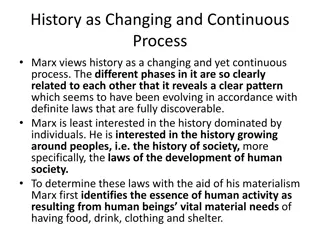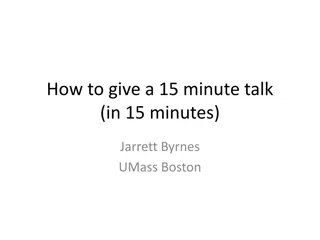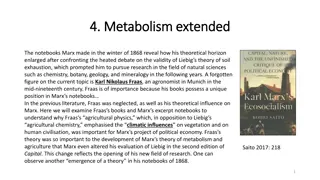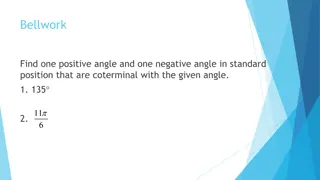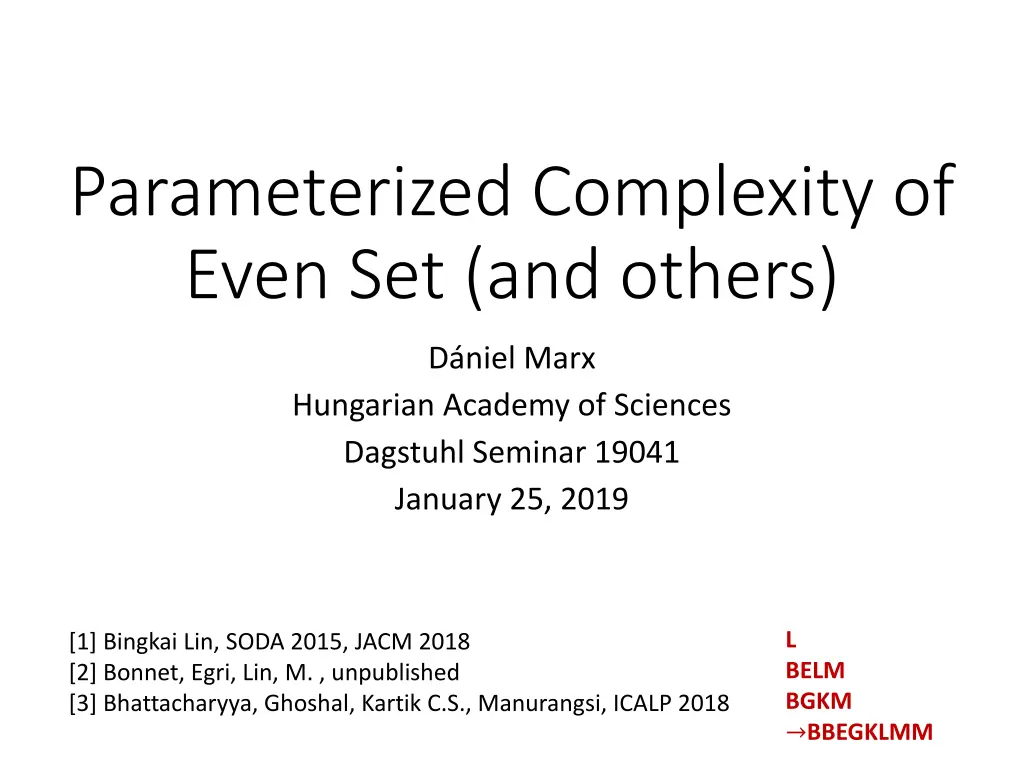
Parameterized Complexity of Even Set Definitions
Explore the intricate world of parameterized complexity through the lens of even set definitions, covering topics such as hitting set variants, W[1]-hardness, coding theory, and more. Dive deep into the complexities of algorithms and problem-solving in this specialized field.
Download Presentation

Please find below an Image/Link to download the presentation.
The content on the website is provided AS IS for your information and personal use only. It may not be sold, licensed, or shared on other websites without obtaining consent from the author. If you encounter any issues during the download, it is possible that the publisher has removed the file from their server.
You are allowed to download the files provided on this website for personal or commercial use, subject to the condition that they are used lawfully. All files are the property of their respective owners.
The content on the website is provided AS IS for your information and personal use only. It may not be sold, licensed, or shared on other websites without obtaining consent from the author.
E N D
Presentation Transcript
Parameterized Complexity of Even Set (and others) D niel Marx Hungarian Academy of Sciences Dagstuhl Seminar 19041 January 25, 2019 L BELM BGKM BBEGKLMM [1] Bingkai Lin, SODA 2015, JACM 2018 [2] Bonnet, Egri, Lin, M. , unpublished [3] Bhattacharyya, Ghoshal, Kartik C.S., Manurangsi, ICALP 2018
Hitting Set and Variants { { } HITTING UNIQUE HITTING ODD EVEN ODD/EVEN } MINIMUM EXACT { } SET All of them are known to be W[1]-hard, except MINIMUM EVEN SET (note: solution is required to be nonempty). Dual form: SET COVER and friends.
EVEN SET definitions Hypergraphs (EVEN HITTING SET) Bipartite Graphs (RED-BLUE DOMINATING SET) Linear Algebra (MINIMUM DEPENDENT SET) Find a nonempty vector ? ?2 most ? such that ?? = 0. Matroid Theory (SHORTEST CIRCUIT): Find a circuit of size at most ? in a binary matroid Coding Theory (MINIMUM DISTANCE): Find a nonempty codeword of Hamming weight at most ?. ? with Hamming weight at
Coding theory ? Generating matrix: ? ?2 ?} ? = ?? ? ?2 Codewords: ? ? ? ? = 0 Fact: distance, systematic code, Sphere packing bound,
W[1]-hardness of ODD SET ?1 ?2 ?3 ?4 ?1,2 ?1,3 ?1,4 ?2,3 ?2,4 ?3,4
? Odd Set Even Set
? Odd Set Even Set Gap Odd Set Gap Even Set
? Odd Set Even Set Gap Odd Set Gap Even Set
BICLIQUE Given a bipartite graph ? and integer ?, find two sets ? and ? of size ? that are fully adjacent to each other. Should have been on the Downey-Fellows list. Easy to give an incorrect proof (which works only for PARTITIONED BICLIQUE) Theorem: BICLIQUE is W[1]-hard [Bingkai Lin, SODA 15, JACM 18]
Template graph ?,?,?, -threshold property for a bipartite graph on ? = (?1, ,??) and ?: For any ? + 1 vertices in ? have at most ? common neighbors. For any choice of ? sets ??1, ,???, we can find one vertex in each set such that these ? vertices have at least common neighbors. There are randomized constructions for such graphs with ? = ?(?2) and = ? (1 ?)(deterministic construction is worse).
The reduction ? 2 vertices with common neighbors ? clique Any ? has ? common neighbors 2 vertices no ? clique
Hardness of BICLIQUE We reduced ?-CLIQUE to ? 2-BICLIQUE. Theorem: BICLIQUE is W[1]-hard and no ? ? ??( ?) algorithm assuming randomized ETH. Approximation version: ONE SIDED BICLIQUE Find ? vertices maximizing the common intersection Hard to distinguish between optimum of ?2 and ? (1 ?)
Randomized construction Random graph on ?2+ ?2 vertices with edge probability ? = ? 2 ?+1+?+1 +2 (?+1)(?+1) Claim 1: probability of ? + 1 vertices with ? + 1 common vertices is at most ? 2. Claim 2: probability of a given set of ? vertices do not have common neighbors is less than ? 1 4?.
LINEAR DEPENDENT SET ?, find ? vectors that Given vectors ?1, ,?? ?? are linearly dependent. ?? = 0 s.t. ? has Hamming weight at most ? Hard to approximate for any constant: proof by reduction from ONE SIDED BICLIQUE.
Encoding vertices Vertex set ? = ?1, ,?? vectors in ?(?1), ,?(??) ?? any ? 1 are linearly independent any ? are linearly dependent ? 1 such that Vertex set B= ?1, ,?? vectors in ?(?1), ,?(??) ?? any 1 are linearly independent any are linearly dependent 1 such that (Vandermonde matrices)
Reduction edge ? = {??,??} F(e) block ? block ? ?(??) ?(??) REALLY! REALLY!
Reduction ? biclique ? linearly dependent sets no ? ? biclique no ?? linearly dependent sets (if is sufficiently large)
COLORED LINEAR DEPENDENT SET Vectors partitioned into ? color classes, distinguish between exists dependent set of ? vectors, one from each color, no dependent set of ? vectors (or arbitrary colors!) Simple reduction from the uncolored version using Color Coding (Turing or not)
MAXIMUM LIKELIHOOD DECODING ? ? and ? ?2 ?, find ? ?2 ?of Hamming Given ? ?2 weight at most ? such that ?? = ?. = ODD/EVEN SET Reduction from COLORED LINEAR DEPENDENT SET. Tool: ?2? as ?-bit vectors.
Reduction Colored ? dependent set MLD solution of weight ? no dependent set of size 3? No MLD solution of weight 3?
NEAREST CODEWORD ? ? and ? ?2 ?, find ? ?2 ?such that Given ? ?2 ?? ? has Hamming weight at most ?. Sparse version: in a YES instance, exists solution ? of Hamming weight at most ?. Inapproximability by an easy reduction from MAXIMUM LIKELIHOOD DECODING.
Minimum Distance (finally!) SPARSE NEAREST CODEWORD Given ? ?2 Hamming weight at most ?. ? ?, find ? ?2 ?such that ?? ? has MINIMUM DISTANCE Given ? ?2 that ?? has Hamming weight at most ?. ? ? and ? ?2 ?, find ? ?2 ?of such
Reduction codeword at distance ? Distance is at most ? no codeword at distance 5? Distance is at least 1.25?
Increasing the gap ?, the Codes ?1,?2with matrices ?1,?2 ?2 tensor product is the code ? ?} ? ? ?2 Fact: dist ?1 ?2 = dist(?1)dist ?2 ?1 ?2= ?1??2 Any ? > 1 inapproximability for MINIMUM DISTANCE can be boosted to ?2 and hence to any constant. Theorem: MINIMUM DISTANCE (EVEN SET etc.) is randomized W[1]-hard to approximate for any > 1.
Integer Lattice problems SHORTEST VECTOR Given a matrix ? ? ? and integer ?, find a vector ? ? {0} with ??? ? ?. NEAREST VECTOR Given a matrix ? ? ? , vector ? ? and integer ?, find an ? ? {0} with ?? ?? ? ?. Theorem: SHORTEST VECTOR for any ? > 1 and NEAREST VECTOR for any ? 1 is randomized W[1]-hard to approximate for any constant > 1.
Summary CLIQUE ONE SIDED BICLIQUE LINEAR DEPENDENT SET MAXIMUM LIKELIHOOD DECODING (SPARSE) NEAREST CODEWORD MINIMUM DISTANCE Transferring inapproximability results can be easier than transferring exact hardness!





